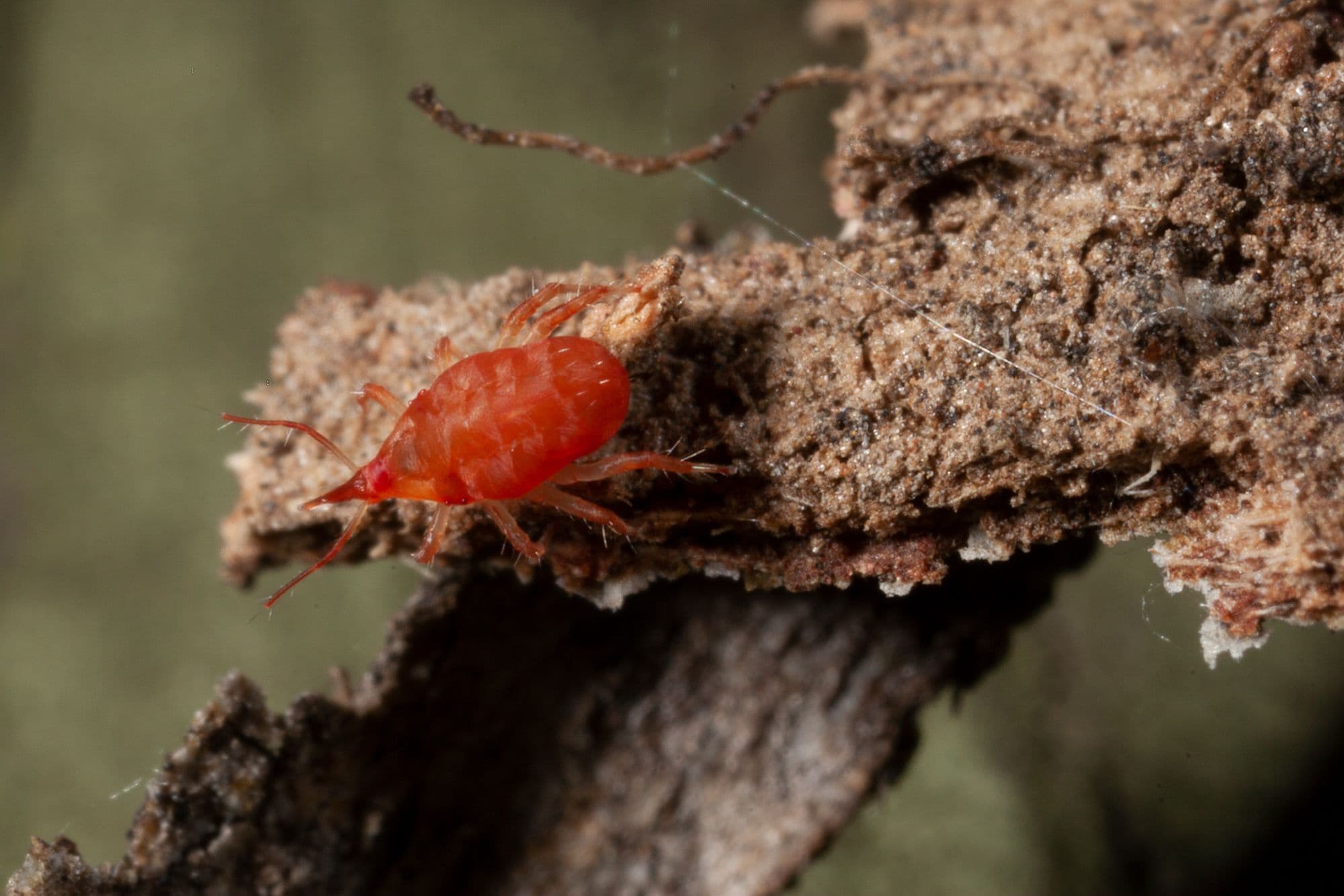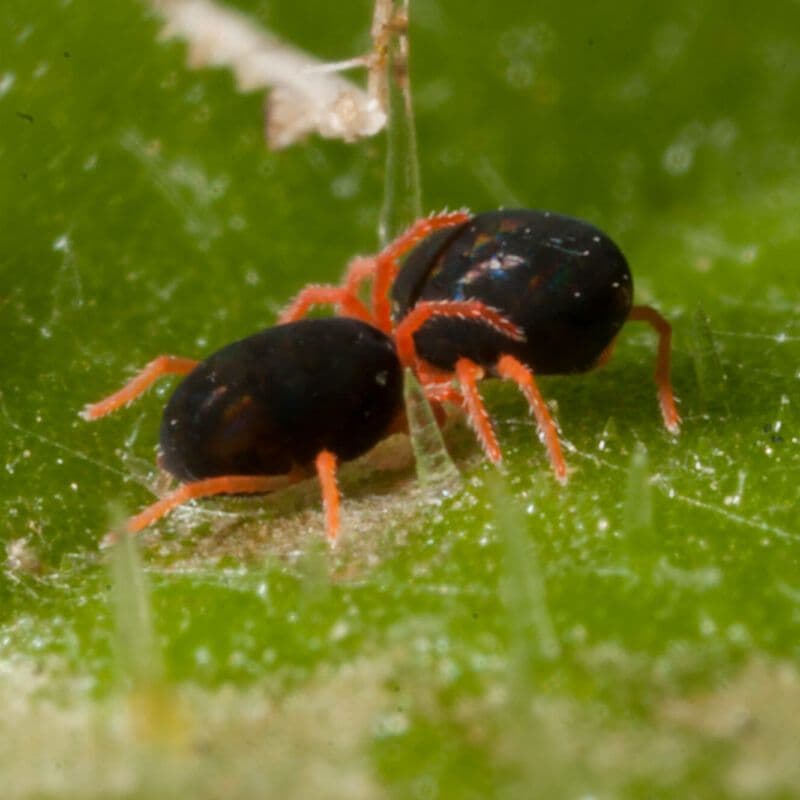Summary
Predatory mites are a diverse group of small arthropods, between 0.2 to 3 millimeters in length, depending on the species. The body shape may vary slightly depending on the species, but they are generally oval to pear shaped, with no distinctive head part. Common colors include pale yellow, tan, beige, or reddish-brown. Some species may have a translucent or semi-transparent appearance.
Like spiders, they are arachnids, and possess eight legs. These legs are relatively long and slender, allowing them to move quickly across plant surfaces or through soil, and they are generally faster than pest mites.
In Australia, several species of predatory mites are commercially available and commonly used in agricultural practices.
Some of the most widely used predatory mite species include
- Red velvet mites (Trombidiidae sp.)
- Spiny snout mite (Neomulgus capillatus)
- Pasture snout mite (Odontoscirus lapidaria)
- Anystis mites (Anystis wallacei)
- Mesostigmata mites (Mesostigmata sp.)
- Montdorensis (Typhlodromips montdorensis)
- Persimilis (Phytoseiulus persimilis)

Diet
Most of those predatory mite species are generalist predators; they prey on other pest mites and lucerne flea.
*with pesticide resistance
Monitoring guidelines
Adult predatory mites may be visible to the naked eye or observed with a hand lens. Mites are best detected on the leaves, however, if mites aren’t observed on the plant material, inspect the soil for mites. It can also be difficult to identify between pest mites or predatory mites.
Try to avoid sampling in sunny conditions or in bright light. Cloudy days, early morning or late afternoon are when mites are most active.
If visually estimating mite numbers is not possible, a blower vac (a blower with a built-in vacuum function) can also be used to monitor mite populations living in the soil. A fine sieve or stocking is placed over the end of the suction pipe to trap mites vacuumed from plants and the soil surface.
Habitat management
Different species of predatory mites have different habitat requirements.
- Red velvet mites have been historically noted in Canola crops.
- Snout mites are found right across the cool, higher rainfall regions of southern Australia, and are most effective in pasture crops such as Lucerne.
- Montdorensis are successful in various protected crops. They can also be used in non-protected crops if temperatures don't drop below 10°C for extended periods.
- Persimilis mites thrive in humid conditions and dense foliage crops. They perform best at temperatures between 15-28°C and relative humidity above 60%. They have been successfully used in various protected and field crops,
Simple habitat management can increase beneficial enemies like snout mites. Management strategies such as minimum tillage, the presence of shelterbelts, cover crops or inter-row cropping vegetation provide shelter and will increase snout mite numbers.
Some species, such as Montdorensis and Persimilis can be bought commercially for release.
Chemical toxicity
To assist growers and advisors in making informed choices around insecticide use in Australian grain crops, the below table summarises the toxicity of foliar chemical sprays on predatory mites.
The impact ratings in the table are colour-coded, indicating the level of impact on beneficial insects. The colour scheme is as follows:
- Green: low impact (<30% mortality)
- Yellow: moderate impact (30-79% mortality)
- Orange: high impact (80-99% mortality)
- Red: very high impact (>99% mortality)
Data shown here is directly from the Beneficials Chemical Toxicity Table.
Ratings for toxicity are based on International Organisation for Biological Control (IOBC) protocols for laboratory studies and reflect percent mortality of insects.
These values represent mortality under controlled laboratory conditions – impacts may vary in the field, especially if multiple applications of a chemical occur.





